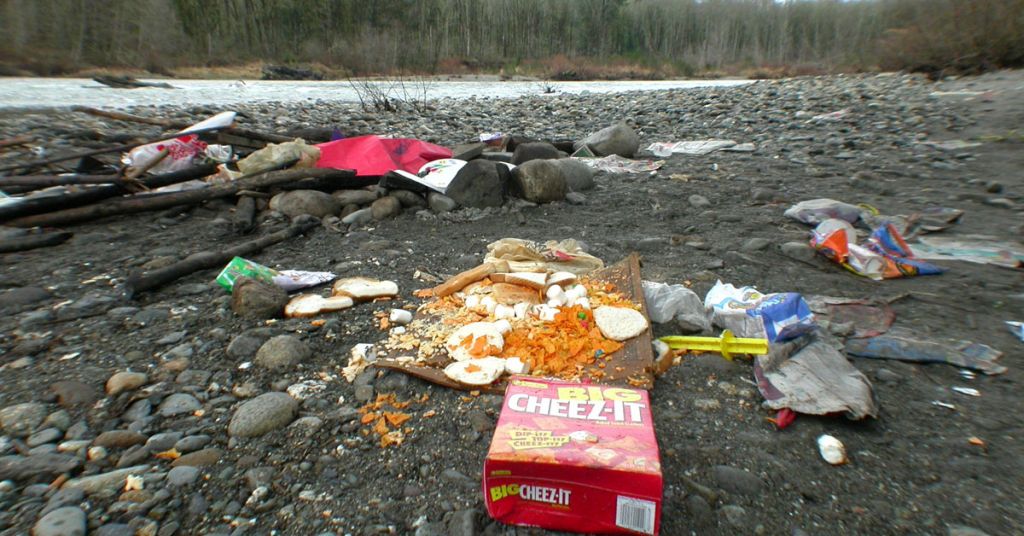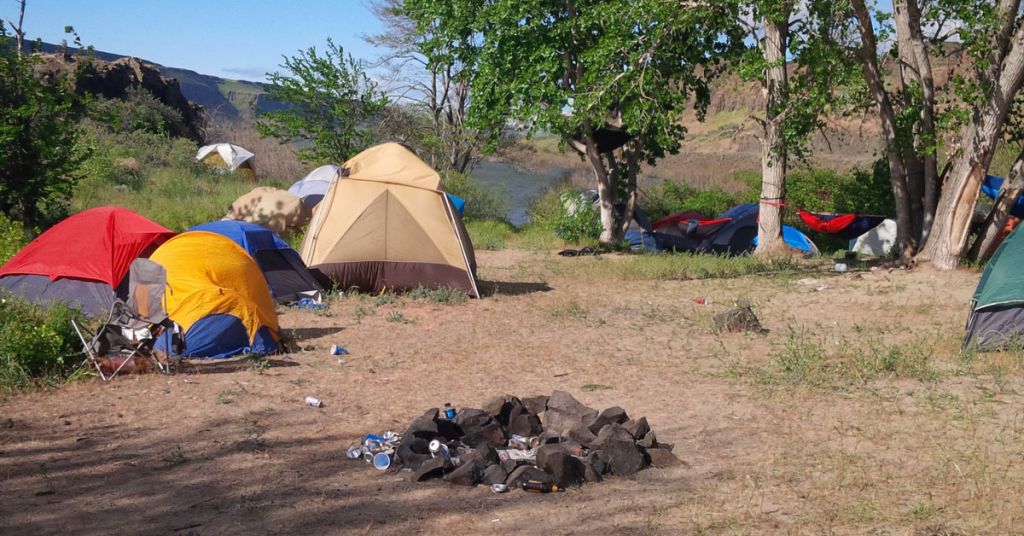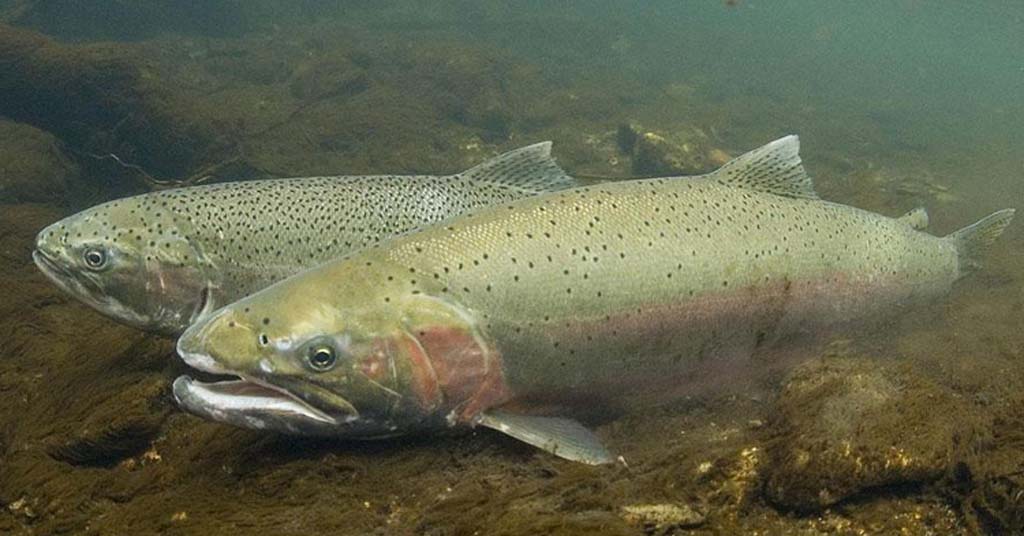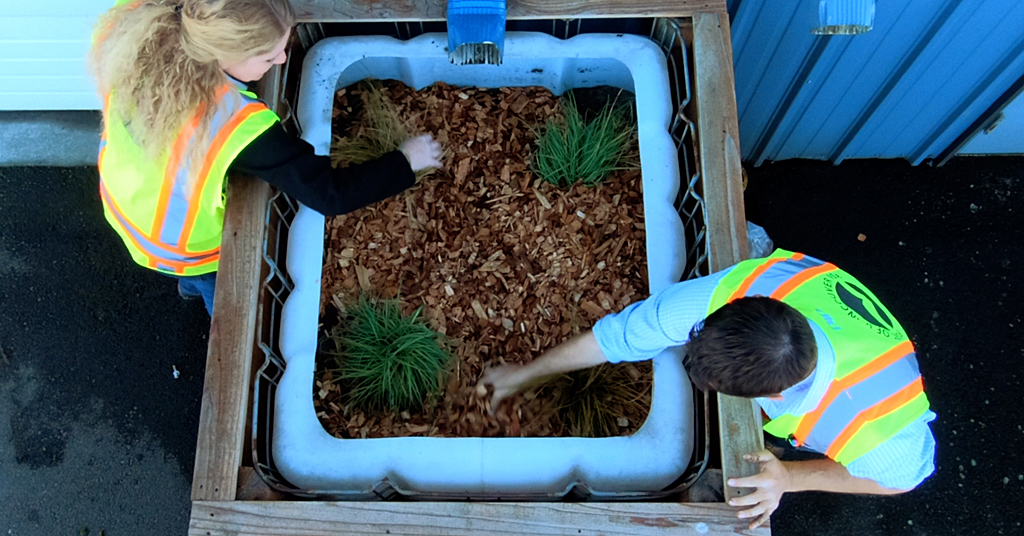From Oregon to Idaho, federal land authorities are shutting down campgrounds due to trash and vandalism

Trash rash: Garbage and vandalism are compelling land managers to restrict access to recreation sites around the Columbia River Basin. Where does it end? Photo by Sand Dragon/CC
By Jordan Rane. June 7, 2021. Bureaucratic jargon like “sustainable recreation” might appear to have no immediate bearing on your next camping trip—until you arrive to find your favorite campground closed because it’s become a total pigsty.
Take some of the popular primitive campgrounds along the stretch of the Columbia River east of Portland near The Dalles and John Day dams, where summer convoys of leave-no-trace-challenged RVers and car campers are long accustomed to free nights of boondocking on the banks.
More: Ugh! Trash in Gorge at ‘crisis level’
This year, riverside campers are finding at least two of their favored overnight spots have been turned into day-use only areas—no camping permitted—for the foreseeable future. Others have had increased use restrictions imposed.
The reason: sustainable recreation.
Translation: An accumulation of trash, illegal dumping, resource destruction, vandalism and other forms of public maltreatment government managers simply can’t keep up with.
[perfectpullquote align=”full” bordertop=”false” cite=”” link=”” color=”” class=”” size=””]An abandoned vehicle that cost about $1,200 to remove influenced the closures.[/perfectpullquote]
“These issues have increased cleanup costs, made conditions undesirable for visitors and natural resources and impacted park ranger and law enforcement resources,” reads a May 27 press release about campground closures implemented since November by the U.S. Army Corps of Engineers. “All planning efforts identified management changes to primitive camping as critical in achieving sustainable recreation and resource protection.”
A list of a dozen Columbia River areas affected by restrictions can be found at this USACE link.
“It’s actually been a combination of things that have led to those closures,” says Tom Conning, Portland District U.S. Army Corps of Engineers spokesperson. “But trash, vandalism and illegal dumping—including an abandoned vehicle that cost us about $1,200 to remove—has certainly influenced that decision.”

Thanks, guys: Due to scenes like these, which U.S. Army Corps of Engineers found at The Wall Park near The Dalles Dam in Oregon in June, new camping restrictions are being imposed. Courtesy USACE
Conning says the closures will enable the Corps to make park improvements, reduce costs for removal of debris and abandoned property and boost public and staff safety as well as protection of park resources.
“There’s still ample opportunity for primitive camping in the area,” he adds. “The public can still enjoy these places and recreate. We just want them to recreate responsibly.”
Idaho, too
Unfortunately, trashed campgrounds are a Basin-wide problem, where “public responsibility” is becoming an oxymoron.
Idaho’s National Forest recreation areas are “seeing far worse etiquette than in years past,” according to a KTVB story last year that exposed misused spots in the Boise area. The Boise NBC-TV affiliate’s story included abuse at Grimes Creek, a popular primitive camping area now midway through a yearlong emergency closure in an effort to manage excessive litter and sanitation issues.
MORE: When adopting a roadside goes beyond picking up trash
“We just hope that people who come up to recreate in the county pack out what they pack in. It’s such a simple concept,” Boise County Emergency Manager Bob Showalter told KTVB.
In May, the station exposed a grossly littered Kirkham Hot Springs site in the Boise National Forest. The site is teetering on closure due to public abuse, overuse and negligence.
Columbia Insight contributing editor Jordan Rane is an award-winning journalist whose work has appeared in CNN.com, Outside, Men’s Journal and the Los Angeles Times.











Some well-informed public servants warn we are “loving places to death”.
I would argue that this stance is only partially correct.
LOVING a place means caring for it, treating it with respect, treading lightly & packing out what you pack in.
It is true fragile (formerly wild) places are indeed being trammeled by bike tires & hiking boots & invaded by remote workers in cool, carbon-emitting vans — all of which leads to deteriorated living conditions for flora & fauna forced to adapt to a warming world, diminishing food supplies, shrinking water sources, invasive species that crowd out the natives.
Insofar as the far reaching extent of the human footprint goes, we cannot deny we are loving places to death.
However, flagrant abuse of the privilege to visit public land AS GUESTS is utterly despicable and a blatant demonstration of hostility, power over, carelessness & animosity — the antithesis of love.
How much of this issue is recreation and how much is related to housing and homelessness?
Not at all surprised! It’s everywhere and has been excepted and overlooked for too long! Shame on this whole ugly mess!
Even if someone is homeless they can surely clean up their own mess!
Painful to watch how POS individuals literally destroy pristine places. Unfortunately, these entitled & selfish individuals are never held accountable for the trash & feces they leave behind, so this will continue to happen as everyone and their frog & lizard take over camping. Soon, there will not be space to pitch a tent because every single inch of land will be covered by some losers’ feces. These types of individuals are a waste of oxygen and space.